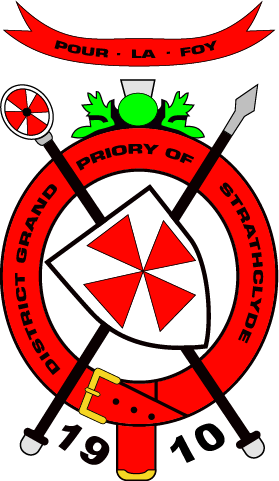
The Order in Scotland
The tradition that the Masonic Order of the Temple is the legitimate descendant of the Crusading Order is not supported by documentary proofs Much can be made of the Masonic connections to Roslin Chapel built by William de St Clair of Roslin.
In the month of December 1778 the Lodge of Scoon and Perth conferred the “six sundry steps of Masonry” on the Office-bearers of St. Stephens Lodge in Edinburgh, viz.: “Past the Chair, Excellent and Super Excellent Mason, Arch and Royal Arch Mason and, lastly, Knights of Malta”.
Less than one year later, in October 1779, Archibald, Earl of Eglintoune, the Grand Master of Lodge Mother Kilwinning, issued a charter for a lodge in Dublin by name of the “High Knight Templars of Ireland Lodge”.
This was the body which shortly afterwards became the Early Grand Encampment of Ireland, and which, in its turn over twenty years later, issued many charters for Encampments in Scotland, some of which still flourish under the Great Priory of Scotland.
The practice of the so-called “high degrees” became so widespread in the Craft Lodges in the last decades of the eighteenth century in Scotland that the Grand Lodge of Scotland issued a directive in October 1800 “prohibiting and discharging its daughters to hold any meetings above the degree of Master Mason, under penalty of forfeiture of their Charter”.
This ruling did not have immediate results, as many of the Lodges continued in the old ways for some years, but it did lead to many Scottish masons applying to the Early Grand Encampment of Ireland for charters, as has been stated above.
In 1805 one such charter was issued to a Knight Templar group in Edinburgh under the title of the “Edinburgh Encampment No. 31”. A little later this group, under Alexander Deuchar, became the “Grand Assembly of Knights Templar in Edinburgh”, and proceeded to seek a charter from the Duke of Kent, Grand Master of the Order in England.
In 1811 the Duke granted a charter setting up the “Royal Grand Conclave of Scotland”, with Deuchar as Grand Master, to take over the Order in this country.
During the period when Sir David Milne was Grand Master, an attempt was made to re-constitute the Order upon a non-masonic basis. As part of this plan, a Priory was set up in London, and a number of prominent men were admitted to the Order. All were Freemasons, but it is thought that at least one non-masonic or Chivalric Knight was created in Edinburgh about 1847. Also, as a result of this plan the ritual was entirely re-written to give a close resemblance to the little that was known of the ancient Templar ceremonies.
The non-masonic phase lasted only for about twelve years, but we have received from it the fine and distinctly Scottish ritual which we practise today
